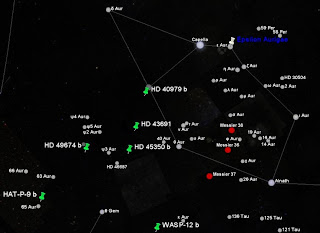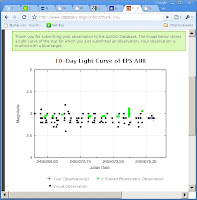On Immortality and Reaching Other Worlds
I know, i know. I've been been reading too much Science Fiction lately. Unfortunately, I can't help it. Because the world itself is treading hauntingly close into the realm of sci-fi. For example, just a few days ago I've come across the concept called "Methuselarity".Methuselarity is the point where we achieve the "Longevity Escape Velocity" (LEV) in the rate of progress of our anti-aging efforts. Longevity and Life-expectancy increases each year as new anti-aging treatments improve. The rate of progress of these technology and therapies will improve exponentially. And similar to the curve that leads to the Singularity, a point may be reached where a person can be constantly treated by life-extension technologies and regenerative medicine. Thus, this person can live longer than Methuselah himself. And, barring fatal accidents--this person can actually live forever. This "immortal" would be similar to the genetic experiments called the "Kildren" in the anime The Sky Crawlers who never grow old.
And it's amazing to think that if Methuselarity does indeed occur, a human being alive or born today might actually get the chance to set foot on an Exoplanet. That scenario, although far-fetched in all respects--may be considered as another culmination of human Space Exploration, especially that mankind must leave earth sooner or later.
The technology that will bring about Methuselarity will also be vital for humans in traversing interstellar space. A debatable issue is whether that person can still be called "human" after being treated with all sorts of radical life-extension technologies. Although "Posthuman" may be a better term, it may not capture the essence of what it means to be human anymore when the technology finally reveals itself.
The technology for anti-aging therapies and life-extension can be carried on "Exodus" ships that will leave the earth to populate other habitable worlds. And mind you, the arrival of Methuselarity would make it a must for Humanity to move off-world from Earth. Why? Because over-population would make Earth a living hell for Methuselarians. A crammed world would drive every "immortal" being on any planet mad. Call it Cabin Fever on a planetary scale.
The idea of a mass exodus of humanity from earth in search of other worlds has already been told in many science fiction novels. Some that i've encountered recently are "The Saga of Seven Suns" and the conceptual book "Exodyssey".
Although the plot of these stories does not mention the ramifications of the Methuselarity that I outlined above, perhaps a story on this Exoplanetology-Methuselarity connection will probably be written by a sci-fi novelist soon. And mind you, when a sci-fi story gets itself written, some aspects of it becomes a reality...in due time.
Owing to his out-of-this world ideas, some critics said that "Aubrey de Grey is effectively a science fiction writer", not knowing that it would turn out to be a compliment. But the Methuselarity is no sci-fi to him. He is directly involved in making it come into fruition via the SENS Foundation that he steers.
Perhaps the seeds for immortality are being planted. Will it's fruit take us to the stars and into other worlds?



![Reblog this post [with Zemanta]](http://img.zemanta.com/reblog_e.png?x-id=abcd5fe2-6fe5-4c10-a7d8-1aeaff1854d3)


![Reblog this post [with Zemanta]](http://img.zemanta.com/reblog_e.png?x-id=468b67fc-1685-4cc5-8d2a-f705f7f9e569)